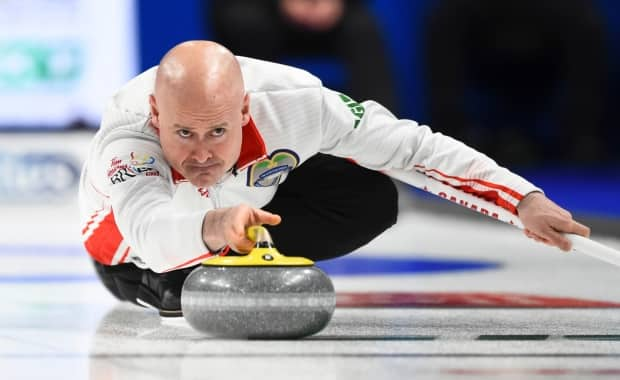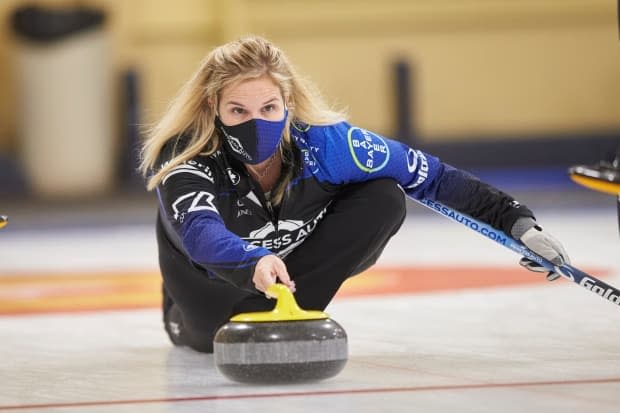What we know and don't know about the Scotties, Brier

It has been another chaotic week of curling cancellations in Canada as more member associations finally surrendered to a seemingly inevitable fate, in the most fair way possible, hand picking their representatives for this year's Scotties and Brier.
And while there is more clarity about what the fields will look like just over a month from the beginning of the curling frenzy set to take place in the Calgary curling bubble, there are still a lot of unknowns.
To recap, eight jurisdictions across Canada have now cancelled their playdowns — they include: B.C., Alberta, Saskatchewan, Manitoba, Ontario, Northern Ontario, Quebec and Nova Scotia.
Nunavut played a best-of-five men's showdown last weekend. P.E.I., N.L., N.B., N.W.T., and Yukon are all still endeavouring to play some sort of championship to determine their representatives.
With so many cancellations, many curlers and fans continue to wonder why Curling Canada is so determined to go on with the show in Calgary.
There are a number of factors — we know money and keeping sponsors happy is at the top of that list.
But there's more to it.
Niche sport
Outside of Canada, curling is a niche sport in most countries. However, in Canada, it's on TV throughout the winter and early spring a lot between Curling Canada events and the Grand Slam of Curling. It's disappeared from the sports landscape for nearly a year.
It's not lost on officials close to the sport as well as the curlers to continue to be relevant and hold onto valuable sponsors - they need to be on the ice and on TV.
And it's also important to note that this is all leading to 2022 Beijing Olympics. Remember, Canada is coming off its worst performance ever at the Games, having missed the podium in the women's and men's events. The pressure on Curling Canada and athletes is immense.
What many people take for granted and have assumed, incorrectly, is that Canada already has a place at the Olympics with just over a year away.
Canadian curlers will need a top-six finish at both the men's and women's world championships to lock up a spot. That shouldn't be a problem if past history is any indication. But in a pandemic, with curling mostly shut down across the country because of health restrictions, Curling Canada knows how crucial it is for the top curlers to be on the ice — that's why they're pushing forward with the Scotties and Brier.
It should be noted that the United States and Scotland, and there could likely be more countries, are not holding playdowns to determine their representatives for the world championships.
Denmark's national championships were halted in December after 14 of the 16 curlers competing got COVID-19.
The women's worlds are scheduled to take place in Switzerland in late March and the men's world championship is set for the Calgary bubble in early April.
WATCH | Heroux, Jones break down Calgary bubble:
Expanded field
Which brings us to an expanded field at this year's championships.
It's looking more and more likely there will be 18 teams at both the Scotties and Brier — the largest fields in the history of both events.
The reason this is happening is because there will be no wild-card game this year. That match, played on the Friday night before the main event, has been a dramatic one-game showdown for the top two Canadian teams that did not qualify through their regional championships. Win and you're in, lose and you head home.
Curling Canada did not want two wild-card teams traveling to the bubble to play one game and possibly have to leave if they lost. These unprecedented times called for unprecedented measures, says Curling Canada. They want to make sure the best teams in the country are on the ice.
"So much is riding on this Olympic qualifying season, we had to make sure that the fields for both the Scotties Tournament of Hearts and Tim Hortons Brier includes Canada's top teams. With many of them not having the chance to earn their way into these events through the traditional route, we feel this is the best possible way to remedy that issue," said Katherine Henderson, CEO of Curling Canada.
For instance, Alberta has yet to name their representatives but should they go with the format many others have, Brendan Bottcher will get the nod as he was last year's provincial champion. Here's the snag: Kevin Koe's team did not compete in provincials as they wear Team Canada colours after winning the previous Brier.

Making space for Koe
So instead of punishing Koe for not winning last year's championship and not letting him in this year's event, Curling Canada is making space for them.
A lot is hinging on who Alberta selects as its representatives — that will then create a domino effect on the rest of the field.
The expanded field is increasing from 16 to 18 teams — the two teams that would have played in the wild-card game and then a third team. Third team that is going to be selected based on criteria is unknown at this point. There will be no shortage of drama over who that third team is on both the men's and women's side.
A quick note on team's who made off-season changes. To be eligible, three of four players need to be returning. If it's two of four, then they are ineligible for, at the very least, the two wild-card spots. We'll see if Curling Canada is willing to make exceptions for that third spot.
Here is the field as it stands right now:
Women
Canada — Kerri Einarson.
B.C. — Corryn Brown.
Saskatchewan — Sherry Anderson.
Manitoba — Jennifer Jones.
Ontario — Rachel Homan.
Northern Ontario — Krysta Burns.
Quebec — Laurie St-Georges.
Nova Scotia — Jill Brothers.
Nunavut — Lori Eddy.
Men
Canada — Brad Gushue.
B.C. — Steve Laycock.
Saskatchewan — Matt Dunstone.
Manitoba — Jason Gunnlaugson.
Ontario — John Epping.
Northern Ontario — Brad Jacobs.
Quebec — Michael Fournier.
Yukon — Dustin Mikkelsen.
Nunavut — Peter Mackey.

There are six major curling events planned for the Calgary curling bubble starting with the Scotties on Feb. 19. That will then lead into the men's national championship beginning of March. 5.
Following these two events, the mixed doubles championship will take place all leading to the men's world curling championship, set to begin in early April.
The final two events held inside the bubble include two Grand Slam of Curling bonspiels.

